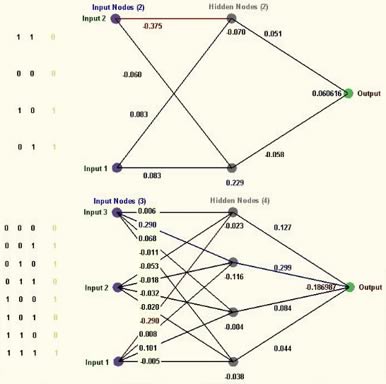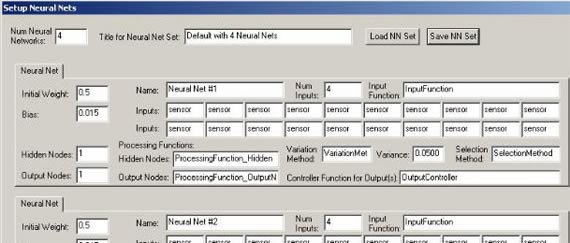Example: individual NNs are set-up as objects with inputs assigned to sensors, and outputs control triggers, game states, etc. An internal topology of connections allow the "weights" for each to determine how much that particular connection influences the function from the previous connection to the next, to the output which may represent a score for how well this particular network performs within this pattern. The values for these "weights" are adjusted, usually using EC, and the network is re-scored, etc. This is a very general description, in reality there are generally many NN objects and more complexity to the scoring function.

Neural Networks:
Artificial object Neural Networks (NNs) are a technique used in artificial intelligence (AI) used to simulate the process that an organic brain ("wetware") performs when processing information and making new connections using neurons. The brain continuously receives stimuli and feedback from senses: touch, smell, hearing, and an incredible amount of connections associated with vision. Internally, the brain makes conscious decisions based on internal connections to its own neural network, which is incredibly complex, by several factors of magnitude more connections than possible with a personal computer. Artificial object NNs are one of the best tools we have as programmers to simulate organic intelligence. NNs are generally added to intelligent agents (NPCs), receive data through various sensors, used to define a set of behaviors on how to react to these input data, increasing the pre-programmed ability for the agent to react intelligently. There are several steps involved, and since the NN starts out "dumb", it needs to be "trained." Neural Networks (NN), Fuzzy Logic, and Evolutionary Computation (EC) can be added to an existing expert system, or completed game, which can optimize a system that has already been programmed to the best that can be done by an expert, and the adaptive learning will continue to attempt to discover how to optimize performance. NNs are well suited to perform pattern recognition, and when set-up with EC, can adapt to perform better than the best known pattern.

